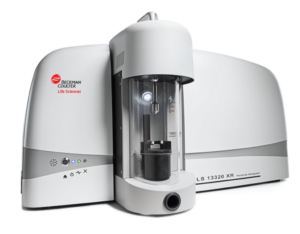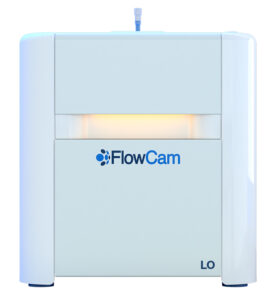There are numerous methods for particle assessment in material characterisation, with different samples requiring specific techniques to determine their suitability for industrial or consumer products, or for research. Particle size analysers vary significantly, utilising different instruments to conduct precise analyses of particle morphology, which in turn informs the biological or physicochemical properties of a material. These devices are designed with diverse specifications and capabilities to gather accurate data about material properties, physical structures, and system stability, among other factors. This is achieved through complex instrument arrays that can probe materials with minimal invasiveness, allowing researchers to accurately characterise materials. This article will explore the specialised parameters of various particle size analysers used in a wide range of industries for material characterisation.

LS 13 320 XR Particle Size Analyzer
This laser diffraction particle size analyser can examine particles in both dry powder and liquid modules. It uses low-angle light scattering and Polarization Intensity Differential Scattering (PIDS) technology to analyse particles ranging from 10 nm to 3,000 µm. Fully autonomous for laboratory use, the LS 13 320 XR enhances research efficiency with its user-friendly interface. It is widely used for material characterisation in industries such as automotive and chemicals.

Beckman Coulter Multisizer 4e
Multisizer 4e
Building on the Coulter Principle, the Multisizer 4e provides ultra-high-resolution particle analysis, measuring changes in cell volume over time. It is capable of analysing particles as small as 200 nm, thanks to its Digital Pulse Processor, which performs multichannel analysis with exceptional accuracy, processing up to 525,000 time-stamped pulses per analysis. This device is ideal for examining particles suspended in electrolytic fluids, aiding in material characterization for various microbiological research applications.

Flow Image Microscopy
FlowCam
The FlowCAM is a portable imaging-based particle analyser capable of rapidly acquiring thousands of particle images, performing up to 40 different measurements per image. It measures various shape and morphological features, including both ABD (Area-Based Diameter) and ESD (Equivalent Spherical Diameter) volumetric measurements. These image-based measurements provide accurate visual data, enabling rapid and high-throughput material characterization, particularly useful in applications like the characterization of column packing particles such as silica.
nCS1 High Resolution Nanoparticle Size Analyzer
The nCS1 specialises in analysing individual nanoparticles in solution, providing quantitative data for particles ranging from 50 nm to 2 µm. It uses Microfluidic Resistive Pulse Sensing (MRPS), also known as the Coulter Principle, which electronically detects nanoparticles as they pass through an aperture within microfluidic capsules. This technique enables material characterization independent of the particles’ physicochemical properties, including transparency. The nCS1 can analyse particle concentrations from approximately 10^6 to 10^12 particles per milliliter, with applications in drug ingredient characterization and nanomedicine research.

Material Characterisation from Meritics
Our sister company Meritics is a leading UK supplier of material characterisation equipment, offering accurate and innovative instrumentation for a wide range of industries. We provide an extensive selection of particle size analysers, including the devices mentioned above. For more information about specific analysers, please feel free to contact us.
 +44 (0)1582 704807
+44 (0)1582 704807 enquiries@lawsonscientific.co.uk
enquiries@lawsonscientific.co.uk





